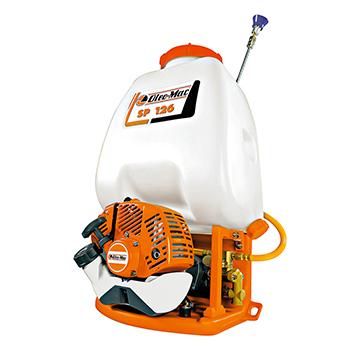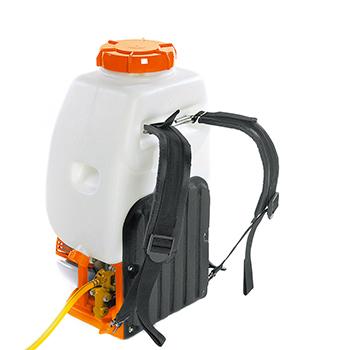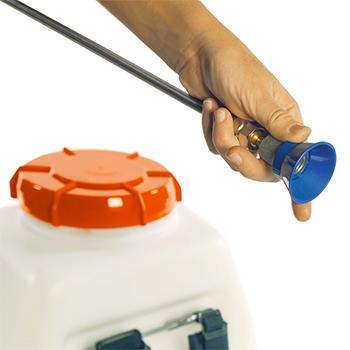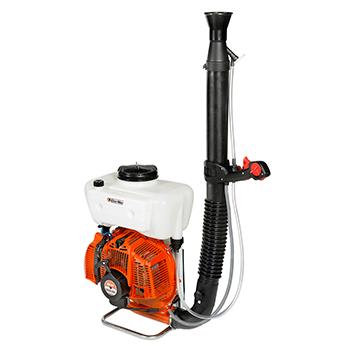Plant pests: how to recognise and eradicate the 10 most dangerous pests

Plant pests are a thorn in the side of every professional and amateur gardener. They cause unsightly damage and stunt the growth of vegetation, fruit trees but also ornamental vegetation. Moreover they are hazardous, being mostly inconspicuous, tiny or even invisible to the naked eye.
But what are these harmful organisms? Different types of insects (and their larvae), mites, nematodes (worms), molluscs (slugs and snails), fungi, viruses and bacteria. Then there are larger animals, vertebrates such as birds and rodents.
Among the many plant pests, we have selected 10 of the most dangerous and widespread species. Read on and find out how to get rid of them permanently.
1. Acari (mites)
Among plant pests, mites form a category of their own because they are not insects, but relatives of spiders. They are dangerous because they are difficult to spot (being tiny and camouflaged), adaptable to various environments and reproduce extremely rapidly. There are about 7000 species of phytophagous (plant-eating) mites, but the main ones are red and yellow spider mites (Tetranychidae) and garden mites (Tarsonemids).
So how can mites be eliminated? Washing plants with a water jet, such as from a sprayer pump, may be sufficient to remove red and yellow spider mites from leaves. Or you can apply an acaricide, i.e. a specific pesticide, making sure to follow the instructions and not exceed the recommended number of treatments (maximum three per year). Also effective against mites is sulphur, which you can find in different formulations, including wettable powder, to be mixed with water for liquid treatments, or in dry powder form, for use in dry treatments.
For spraying liquid pesticide treatments you can use a professional backpack sprayer such as the Oleo-Mac SP 126, which has a 2-stroke petrol engine with 0.9 kW power output, 8 l/min flow rate and 35 kg/cm² pressure. It is equipped with a lance and adjustable jet that sprays liquid from the 25 l tank over an area with a diameter of 1 m and a vertical reach up to 2.2 m.
Alternatively, to apply liquid pesticide treatments, you may prefer a professional backpack mistblower such as the MB 800 with 3.7 kW two-stroke petrol engine. Its powerful air flow of 120 m/sec produces a 3 l/min jet capable of reaching a length of 14 m and a height of 12 m. For the most precise jobs, you can use the ULV kit, which reduces the jet of liquid pesticide to 0.13 l/min. Or, to take advantage of the mistblower’s two-directional jet, you can fit the double jet kit.
You can also use a backpack mistblower for dry pesticide treatments, together with the appropriate dusting kit for powder and granular products, which conveys the product directly into the blower tube without it coming into contact with the mistblower fan. With this type of treatment, the mistblower delivers a 3 kg/min jet of product that can reach plants at a distance of 15 m horizontally and 13 m vertically.
2. Aphids
Aphids—known as the lice of the plant world—are one of the most widespread and feared parasitic insects. They colonise most vegetable and ornamental plants, sucking the sap and covering the plants in deposits of honeydew, a sugary substance. In addition to making vegetation look dirty, honeydew also suffocates leaves and attracts harmful fungi (sooty mould) and insects, including ants. So, be on the lookout if you notice ants coming and going around a plant.
To eliminate aphids, you can clean the plant with a water jet, spray macerated garlic or nettles, or apply natural insecticides based on pyrethrins. Alternatively, using Marseille soap or special soap for plants dissolved in water, you can remove honeydew and prevent aphids from settling on plants. If you decide to use a chemical insecticide to treat a severe or widespread aphid infestation, the most common aficides are based on pyrethroids.
3. Cochineals
Cochineals are a pervasive insect not only in the garden but also in the house, where they seek out dry and poorly ventilated areas. They are phytomites. i.e. they feed on sap which they suck from the stems and leaves of plants, particularly succulents, conifers, olive trees, laurels and many houseplants.
How to get rid of cochineals? Whereas in the home it may be sufficient to remove them by hand, especially by checking the most hidden parts of plants, outdoors it is advisable to use an insecticide, especially if the infestation is extensive. You can spray some white oil diluted in water, remembering to also treat the most inaccessible areas. For this purpose, a mistblower may be even more effective than a sprayer pump, although the latter can be fitted with a handy 67 cm modular extension for sprayer pumps. To enhance the effectiveness of the pesticide treatment, you can mix the white oil with pyrethrum-based insecticide.




4. Lepidoptera
Completely harmless (and often beautiful) when fully grown, but deadly in the larval stage, butterflies and moths—collectively known as Lepidoptera—start life as caterpillars that devour leaves and wood. You can effectively eradicate them using organic pyrethrin-based insecticides or Bacillus thuringiensis, which is mixed with water and sprayed onto plants using a sprayer pump.
If the infestation is extensive, you can speed up the task with an Oleo-Mac fixed multi-jet lance for sprayer pumps, available with 2, 3, 4 or 5 jets.
5. Tenthredinidae
Tenthredinidae is a family of insects similar to small wasps. They predominantly attack fruit trees—such as apple, pear, cherry, plum, peach, apricot, almond—and rosebushes, feeding on shoots, leaves, flowers and fruits. They cause leaves and fruits to drop off, affect blossoming and ruin the quality of harvested fruits.
An effective remedy in all these cases is to spray the plants with pyrethrum- or pyrethroid-based insecticides. For the pear sawfly, you can use products based on azadirachtin or imidacloprid.
6. Metcalfa
Native to the American continent, Metcalfa feeds on plant sap and produces honeydew, just like aphids. One solution to combat this pest is to spray potassium soap for plants dissolved in water, which washes away both eggs and insects.
7. Thrips
Thrips are a diverse family of plant-feeding insects that prey on fruit trees, vegetable and ornamental plants, one of the most widespread being Frankliniella occidentalis. They prefer hot, humid places and can be identified by the stains they deposit on leaves and by the deformations which they cause to shoots and fruits. In addition to inflicting unsightly damage and stunting growth, thrips can transmit virosis and bacteriosis to plants.
To keep thrips in check, you can use fungicides and insecticides that are effective on other pests (for example, aphicides work well) or spinosad-based pesticides, which are particularly efficacious.
8. Peronospora (downy mildew)
Downy mildew is a disease caused by fungi that absorb nutrients from plants, causing the tissues to die and the affected parts to fall off (mainly leaves, but also flowers and fruits). It spreads most easily in spring, due to the cool and humid climate.
To get rid of it, use fungicidal antiparasitic products. Copper-based products serve a preventive purpose, whereas for infestations that have already taken hold, you can use systemic fungicides which are absorbed by the plant and act on the fungi.
9. Oidium (powdery mildew)
Oidium is a very recognisable fungal disease because it covers plants—whether in vegetable patches and ornamental gardens—with white powdery spots, hence it is also called powdery mildew. It develops best with high humidity, heat and poor ventilation: so you can prevent it by growing plants in sunny and aerated areas, planting at suitable distances and pruning fruit trees.
If you have to resort to antioidic products, you can use sulphur-based treatments or benzimidazole and triazole fungicides. You can also use biofungicides that contain Ampelomyces quisqualis, a natural antagonist of powdery mildew.
10. Peach leaf curl
Similarly to downy mildew, peach leaf curl develops best in spring when the weather is humid and cool. This disease is caused by a fungus that prefers peach trees, but which also attacks other fruit trees, as well as vegetable and ornamental plants. It is an instantly recognisable by the red-pink blisters which it causes on affected plants.
To prevent the blistering, apply copper-based treatments such as Bordeaux mixture, which is a traditional fungicide based on copper and hydrated lime. On trees attacked the previous year, it is advisable to protect the buds before and after flowering with fungicide treatments based on copper, ziram or dodine.



